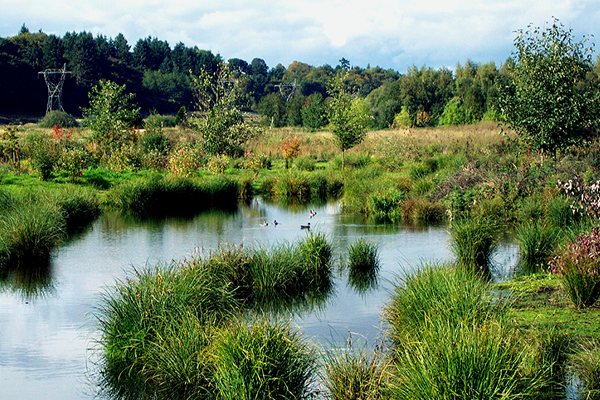Stormwater Management Program Plan

Surface and Groundwater Programs
The water all around us plays an essential role in Vancouver’s livability.
Clean, abundant water resources are vital to Vancouver’s high quality of life. All of us are responsible for protection and management of the water all around us – surface and ground water, streams and aquifers.
The City of Vancouver provides engineering direction and technical expertise in the planning, review and design of efficient stormwater systems. We promote clean water practices to protect, preserve or improve surface water and groundwater resources.
Protecting our community water resources, complying with permit regulations
Vancouver’s Surface Water Management Program is the core administration for coordinating activities required by the federal Clean Water Act and the City’s Phase II National Pollutant Discharge Elimination System (NPDES) Permit for Western Washington issued by the Washington Department of Ecology. The City’s stormwater ordinances and related codes comply with the City’s NPDES permit. Our General Requirements supplement and clarify the Western Washington Stormwater Manual to provide guidance for and tailor to local conditions.
View the City of Vancouver’s 2024 Stormwater Management Plan and the list of elements to Vancouver’s Surface and Groundwater Management program, including information about changes to the City’s Municipal Codes relating to Stormwater Management, as required to meet the Phase II Municipal Stormwater Permit for Western Washington, issued by the state Department of Ecology. Public review is encouraged. Written comments may be submitted by email to surfacewater@cityofvancouver.us. Questions? Please call Vancouver Public Works at 360-487-7130 and reference the Stormwater Management Plan.
Policies and NPDES – Western Washington Municipal Stormwater Permit
The Washington State Department of Ecology first issued the Western Washington Phase II Municipal Stormwater Permit in January of 2007. Five counties and 81 cities in Western Washington, including the City of Vancouver, must follow the guidelines in this permit to manage stormwater before it discharges to surface water.
The Western Washington Phase II Municipal Stormwater Permit stems from the federal Clean Water Act and shares its intent to restore and maintain the chemical, physical, and biological integrity of our nation’s waters. It combines requirements from the federal National Pollutant Discharge Elimination System (NPDES) Phase II Permit program and the State of Washington Water Pollution Control Law (RCW 90.48).
The City of Vancouver is committed to protecting water resources and complying with permit requirements across all city programs.
Permit requirements fall under five basic categories; public education and outreach, public involvement and participation, illicit discharge detection and elimination, the control of runoff from development, and pollution prevention. The NPDES Permit also requires annual updates.
The NPDES Permit requires development and documentation of a Stormwater Management Program (SWMP) Plan. Documentation of this program must be organized like the permit and updated annually. The permit also requires completion and submittal of an Annual Report to document how the City is complying with each section of the permit.
Below you will find the City of Vancouver’s Stormwater Management Program (SWMP) including the 2023 Annual Report which have been submitted to the Washington Department of Ecology as required. Copies of annual reports for 2009 to 2022 are available from the Surface Water Management team at 360-487-7130 or surfacewater@cityofvancouver.us upon request.
Watershed Health Assessment
The Burnt Bridge Creek and Columbia Slope watersheds represent the core area of the City of Vancouver’s watershed management efforts. Learn more here:
Columbia Slope Water Quality Monitoring Summary Report
Collecting water quality data in surface water discharges to the Columbia River along the Columbia Slope has filled a longstanding data gap for the City. During the two-phase project, 303 samples were collected at 21 stations during 18 storm events and 12 base flow events. Most monitoring stations had good water quality, with water quality exceedances during storm events for typical stormwater runoff pollutants in basins with large proportions of highway or major arterial roadways. The results will help prioritize stormwater improvement projects in these basins to target toxics that may reach the Columbia River and negatively impact aquatic life.


